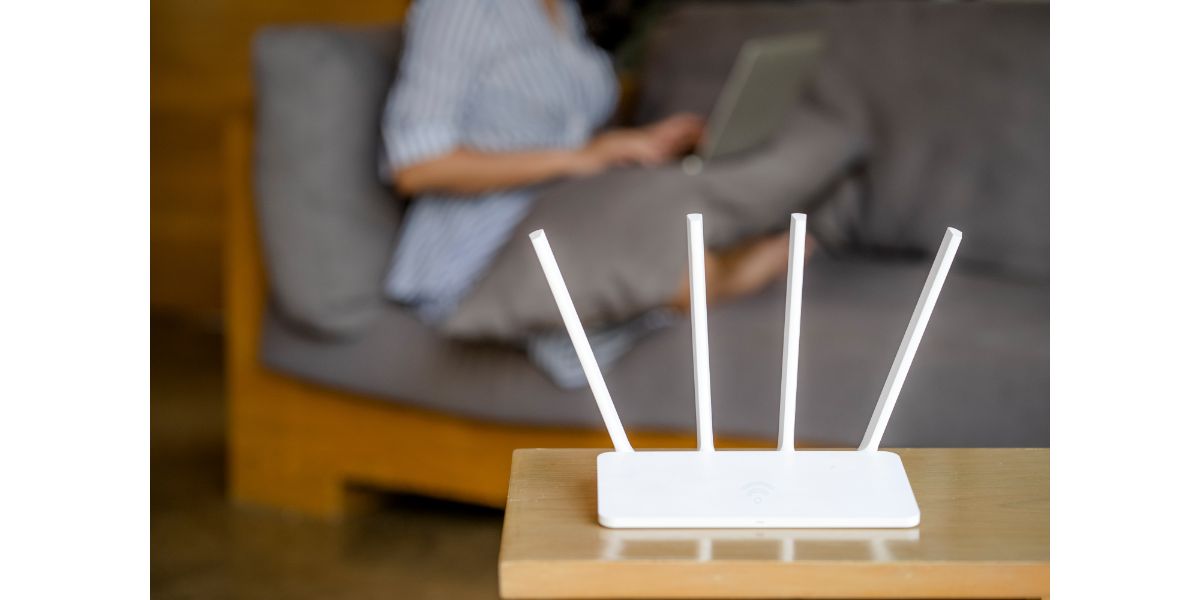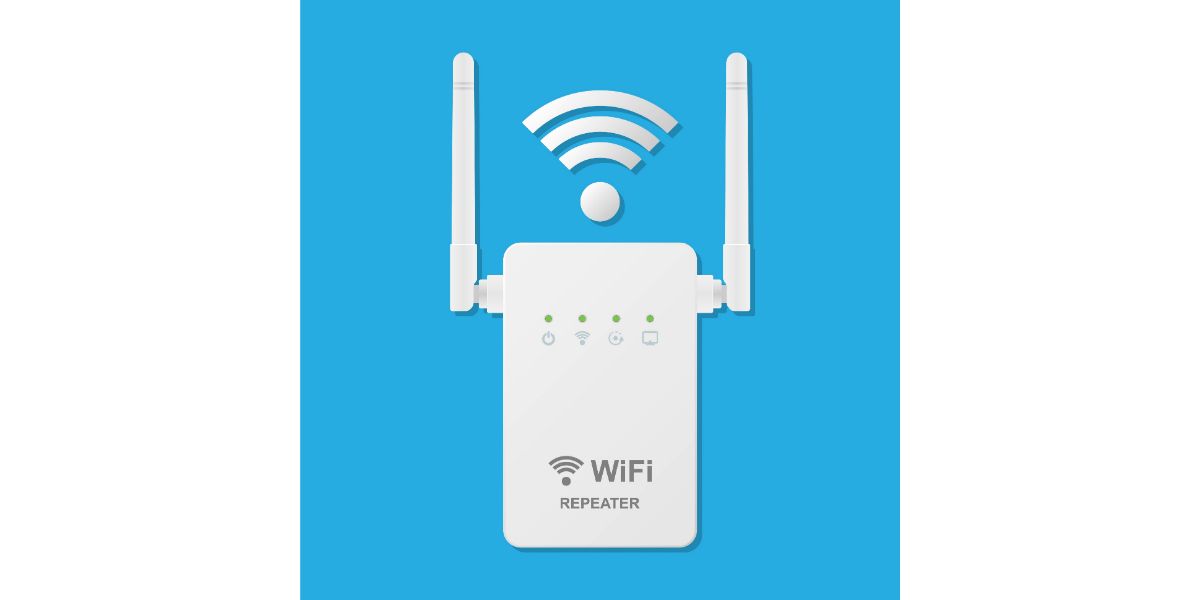Disclaimer: This post may contain affiliate links, meaning we get a small commission if you make a purchase through our links, at no cost to you. For more information, please visit our Disclaimer Page.
Setting up your home network comes with some unique challenges, one of which is learning about all the different types of components you might encounter on your quest to get maximum coverage. Knowing the difference between a router and a repeater is one of the first major steps on this journey of technological discovery.
Repeaters are used to boost a WiFi signal in an area where the coverage is weak, while routers are used to create a WiFi network. Repeaters are used in areas that are far from the router or that are separated from it by thick walls. However, repeaters won’t improve your internet speed.
To add to the confusion, there are cases where a router can be used as a repeater, which is also sometimes called an extender. In this article, we explain all you need to know about how these components differ and how you might implement them in a network.
Table of Contents
Here’s How Routers Differ From Repeaters
Below you will find a breakdown of all the differences between routers and repeaters, followed by a more in-depth explanation.
Routers
- Provides the base network. This is the device that allows devices to connect to the internet and interact on the network.
- Used to configure the network. Routers have internal software used to set up internet connections and wireless networks.
- Can be costly. Even an entry-level router will cost more than the average repeater, as they are far more complex.
- Can be used as repeaters. If you have an old router lying around, you can normally configure it to act as an extension of your network.
- Bulkier than repeaters. Most routers take up a fair amount of space, whether mounted on a wall or occupying a table or shelf.
- Complex: Routers contain sophisticated electronics and software.
Repeaters
- Extends the network coverage. Useful to strengthen network signal in areas that are too far from the router.
- Limited configuration. Normally, all you can do with a repeater is connect it to the base network via a wired or wireless connection.
- Affordable. Typically, repeaters are significantly less expensive than routers.
- Plug and play. Setting up a repeater is usually a simple task and can be accomplished even if you have limited technical knowledge.
- Compact: Not nearly as much technology needs to be squeezed into a repeater, which makes them much less obtrusive.
As you can see, these two devices do share some similarities, but they are generally used in very different scenarios. The main takeaway is that routers are essential for your network, while repeaters are merely extensions of that network.
How Are Routers Used?
The router is your network’s hub of operations. While it might look like something from outer space, it is a good idea to familiarize yourself with it and its functions in your home network.
In most fiber installations, there will be an access point of sorts which is usually fixed to the wall. In most cases, it belongs to the company providing and maintaining your internet service. These access points sometimes resemble routers but can be as simple as a plug for an ethernet cable.
The router will sometimes be provided by your ISP together with your internet package, but in some cases, you will have to buy your own.
The router needs to be connected to the access point via an ethernet cable. Then, it’s configured with the user’s account details in order to create the wireless network and allow devices like smartphones and computers to connect.
How Are Repeaters Used?
Much like a router requires fiber infrastructure to be of any value, a repeater needs a router to do its job. It is similar to a router in that it creates a network, except its network is dependent on a router to function. It often has the same name as the main network followed by “_EXT,” denoting its status as an extension.
Repeaters can be connected to the router with an ethernet cable or wirelessly. How you connect a repeater to the network depends on the manufacturer.
Do You Need a Repeater?
You might find that in some regions of your home, the WiFi signal isn’t as strong as it is in other places. This is mostly due to the distance from the router, but obstructions like thick walls and large metallic objects can also cause it.
To determine whether a repeater is needed, you must first determine whether you have a WiFi signal or bandwidth issue. A low-quality router can sometimes throttle high-speed connections or may not support higher bandwidths at all. In this case, a repeater will not change anything.
Most devices and gaming consoles will give a barred indication of WiFi signal strength. If your indicator shows full strength, then you may simply have an old or low-quality router. If the signal is low, that means the device is struggling to transmit and receive data from the router, so you may benefit from a repeater.
Before you go out and purchase a router, you can try moving the router to a place where it will give better coverage. You may need a longer ethernet cable to connect it to the access point.
Sometimes moving your router is not practical. Running cables may require drilling through walls and ceilings, or maybe the area you are trying to cover is simply too large for your router. In those cases, a repeater can help strengthen your connection.
You may be able to solve your issue by simply upgrading to a better router. Some routers are more powerful than others, and they usually have an estimate of their coverage in the product description. Choose one that matches the size of your house and make sure it’s from a reputable brand.
You can also take advantage of the fact that most modern routers are dual-band. That means they create two networks: 2.4 GHz and 5 GHz. The 2.4 GHz network is slower, but it also has a longer range and it’s better at going through walls. Before getting a repeater, make sure the issue can’t be fixed by simply switching to the 2.4 GHz network.
Repeaters Will Not Make Your Network Faster
Repeaters can improve the connection quality in some areas of your home, but that is the beginning and end of their usefulness.
To invoke the old adage, you cannot draw blood from a stone, just like you cannot get extra speed out of an old or outdated router. If your internet is too slow even when you have a strong connection to your WiFi network, consider upgrading your router or talking to your ISP about your internet plan.
How Do Extenders Affect My Network?
Wifi extenders behave as any other device connecting to your network, except it allows multiple other devices to connect and manages the flow of information between the connected devices and the network.
Wifi extenders can sometimes create lag since they have to relay information from one device (the router) to the other (your computer, console, or other smart device) and back again. This may be influenced by the distance and the quality of the connection between the extender and your router.
If you want to extend your wifi connection to a building outside your house, such as a garage, it may be better to have a wired connection between the repeater and the router for optimal performance.
As explained earlier, thick walls and dense objects can also create dead spots in your network coverage. This means that to achieve the coverage you desire, running cables may be unavoidable.
Using a Router as a Repeater
If you have a spare router, you can normally set it up as a repeater. In some cases, this requires a little more effort than installing a repeater, but for the most part, manufacturers try to make the process as intuitive as possible.
Keep in mind that not all routers can function as range extenders or repeaters. Many old routers don’t have this feature, as with most portable routers.
When setting up a router as a repeater, the process differs slightly between manufacturers and even models from the same manufacturer. Most of the time, the steps you follow will look something like this:
- Turn on the router. Allow it to power up fully. To verify, check to see if it is broadcasting a network.
- Reset the router. Using a pin or a toothpick, press the “reset” switch that is typically found on the back or bottom side of the router for 5-10 seconds.
- Restart the router. Allow it to power up again and connect to it using a computer or smartphone. Use the WiFi key on the bottom of the router or simply plug an ethernet cable into one of the available LAN ports.
- Log in to your router’s interface. To do this, type the IP address found on the back of the router into your internet browser. Enter the default username and password.
- Configure your router as a repeater. You can refer to your router’s user manual or setup guide for more specific instructions. You can find these online. For example, here are the manuals for Huawei and TP-Link routers.
By and large, you will come across some form of easy-to-use wizard that makes connecting your extension to your home network painless and only marginally more difficult than connecting any other new device.
That said, some routers may require manual configuration, in which case you will have to get specific instructions. Most router manufacturers endeavor to make their user manuals readily available, so you’ll easily find them if you Google the make and model of your router.
Why You Shouldn’t Use a Router as a Repeater
Setting up a router as a repeater does have its benefits, but there are some drawbacks when compared to installing a repeater.
If all you need to do is extend the range of your network, setting up an old router to function as one will likely consume more electricity than a dedicated repeater.
On top of that, routers take up more space, and despite all the efforts of manufacturers to make routers aesthetically pleasing, they vary between tolerable and complete eyesores.
Many extenders plug right into the wall socket, like this TP-Link AC1900 WiFi Extender(available on Amazon.com), which can give you up to 2800 square feet and connect up to 35 devices. Such discreet designs also ensure you won’t be tripping over additional wires.
Choosing the Right Ethernet Cable for Your Repeater
If you want your wired connection between your repeater and router to last, you cannot just use any old ethernet cable you find lying around.
Depending on where you want to run your cabling, you may need to get a heavy-duty ethernet cable designed with special insulation that enables it to be used outdoors. If you use regular ethernet cabling outdoors, it will not last if exposed to the elements.
GearIT Cat6 Outdoor Ethernet Cable (available on Amazon.com) is appropriately insulated and suitable for direct burial. Running it through a conduit is still advisable, as this facilitates easier removal and installation in the event that it ever has to be replaced.
Never Attempt To Amplify Your WiFi Signal With Hacks
You may come across methods of amplifying your wifi signal by using things like soda cans, wire, and foil. This is a very bad idea and is, more often than not, illegal.
Tampering with your Wifi antennas to get a stronger signal can have unwanted and possibly dangerous consequences. It can interfere with and sabotage nearby networks, even your own, and can also land you in hot water with the law.
Technology that is considered safe is usually only safe when used as intended. Only install wifi antennas supplied by the manufacturer with your router or extender.
Conclusion
Wifi routers and repeaters may seem very similar at first, but they have very different roles when it comes to home networks. If you can’t improve your WiFi signal by relocating your router, an extender can help you get the coverage you need, but it won’t improve your network speed.



